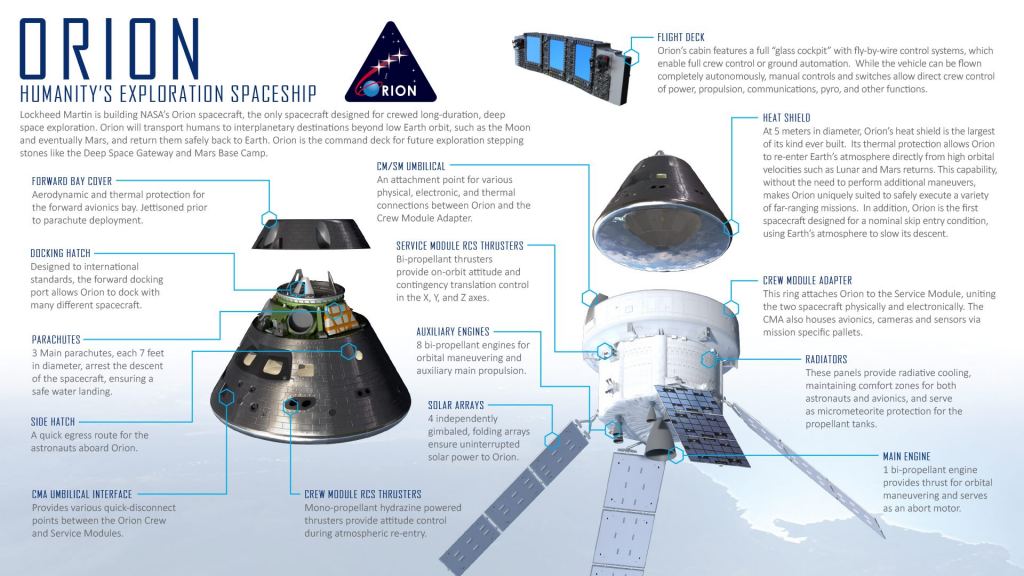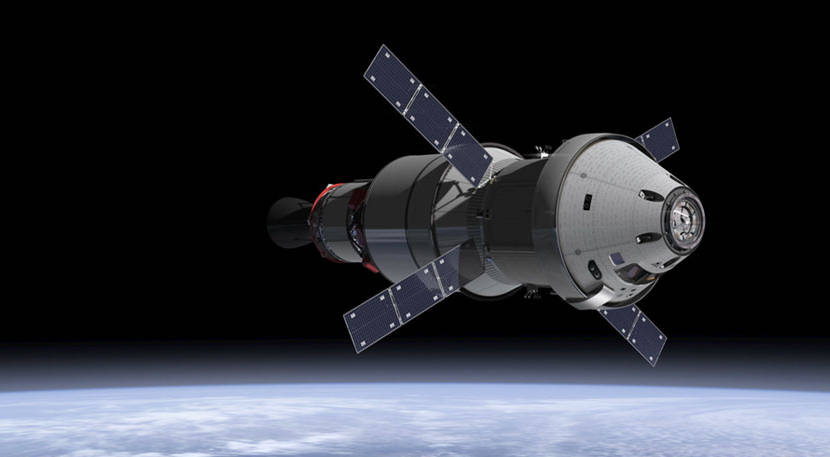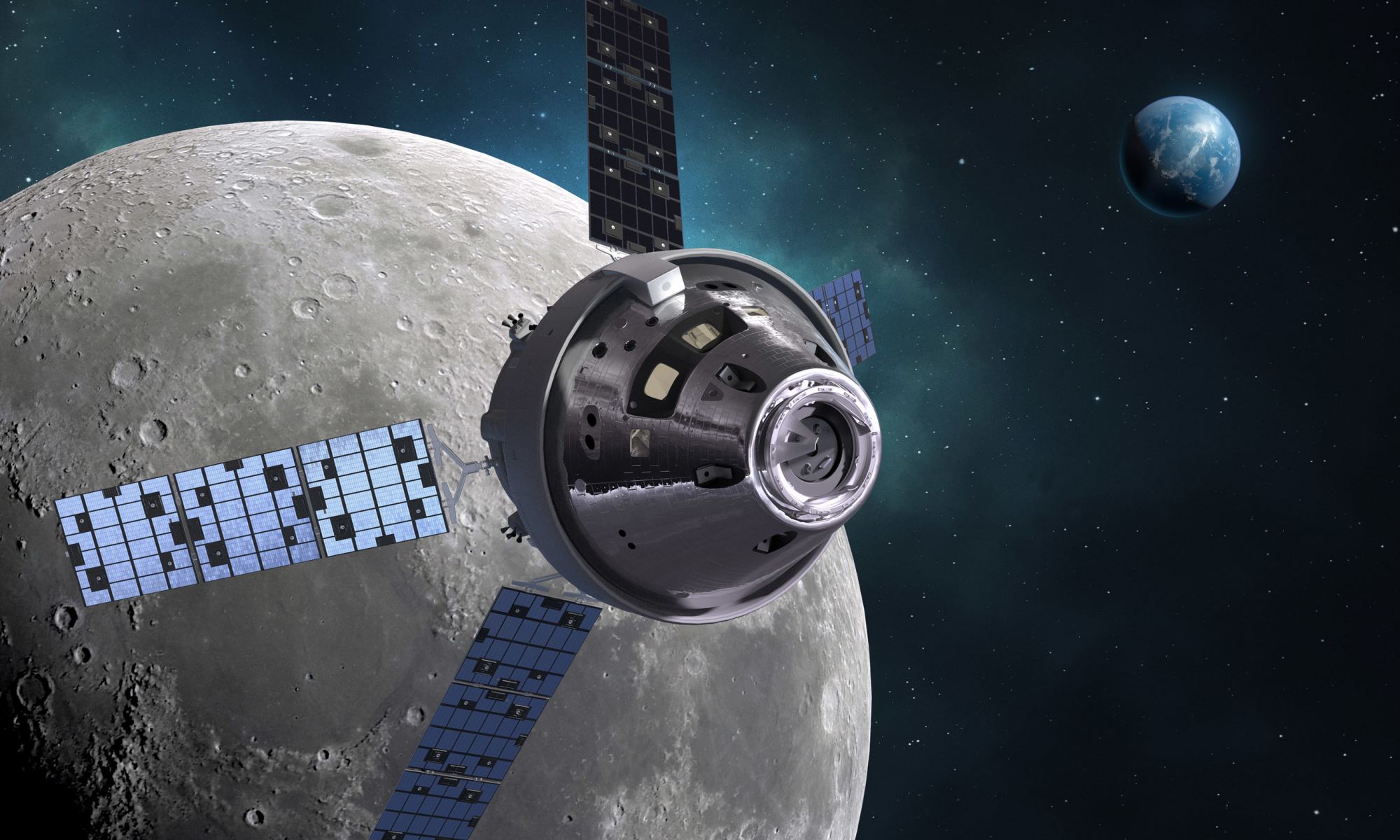When NASA sends astronauts back to the Moon and to Mars, the Orion Multipurpose Crew Vehicle (MPCV) will be what takes them there. To build these next-generation spacecraft, NASA contracted aerospace manufacturer Lockheed Martin. Combined with the massive Space Launch System (SLS), the Orion spacecraft will allow for long-duration missions beyond Low Earth Orbit (LEO) for the first time in over 50 years.
On Monday, Sept. 23rd, NASA and Lockheed Martin announced that they had finalized a contract for the production and operations of six missions using the Orion spacecraft, with the possibility of up to twelve being manufactured in total. This fulfills the requirements for NASA’s Project Artemis and opens the possibility for further missions to destinations like Mars and other locations in deep-space.
The Orion concept was unveiled on January 14th, 2004, shortly after the accident with the Space Shuttle Columbia. At the time, the Orion was known as the Crew Exploration Vehicle (CEV). It was intended to replace the aging Space Shuttle fleet and serve as a successor to the Apollo Command and Service Module (CSM) that took astronauts to the Moon between 1969 and 1972.

A year later, the CEV was amalgamated into NASA’s Constellation Program (2005-2010) and renamed the Orion Crew Exploration Vehicle (and later the Orion MPCV). By 2009, the Orion began to be tested, first with a splashdown recovery test followed by launch testing, to validate its systems and performance. One year later, the design would become central to NASA’s vision of conducting regular missions to the ISS, the Moon, and Mars.
At present, NASA plans to use the Orion capsule to send the first woman and the next man to the Moon by 2024 (Artemis III). With the contract finalized for the delivery of the next six vehicles, this vision is one step closer to becoming a reality. Rick Ambrose, the executive vice president of Lockheed Martin Space, spoke glowingly about the contract and the partnership it represents in a recent company press release:
“This contract clearly shows NASA’s commitment not only to Orion, but also to Artemis and its bold goal of sending humans to the Moon in the next five years. We are equally committed to Orion and Artemis and producing these vehicles with a focus on cost, schedule and mission success.”
The contract NASA signed with Lockheed – the Orion Production and Operations Contract (OPOC) – is an indefinite-delivery, indefinite-quantity (IDIQ) contract specifying the delivery of 6 to 12 Orion spacecraft through to Sept. 30th, 2030. Initially, NASA ordered three Orion spacecraft to conduct Artemis missions III through V – crewed missions to the lunar surface occurring between 2024 and 2026 – for $2.7 billion.

By 2022, NASA plans to order three more to conduct missions VI-VIII (for an additional $1.9 billion), which are tentatively scheduled to run from 2026 to 2028. As NASA Administrator Jim Bridenstine expressed in a NASA press release:
“This contract secures Orion production through the next decade, demonstrating NASA’s commitment to establishing a sustainable presence at the Moon to bring back new knowledge and prepare for sending astronauts to Mars. Orion is a highly-capable, state-of-the-art spacecraft, designed specifically for deep space missions with astronauts, and an integral part of NASA’s infrastructure for Artemis missions and future exploration of the solar system.”
This sustainable presence includes NASA’s proposed Lunar Orbital Platform-Gateway (LOP-G), a modular space station that will be delivered to orbit around the Moon using the SLS and Orion in the coming years. The Lunar Gateway will also serve as the hub for future missions to Mars, once the Deep Space Transport (DST) is integrated with it.
Some of the spacecraft components that have been already designed and qualified for the Orion will also be provided for Gateway use. This will eliminate the need for the Gateway Program to develop and qualify similar components, which will help reduce the overall cost of development. This is crucial given current budget concerns, which have led some to question whether the Lunar Gateway will be canceled.

Further cost-reduction measures include advanced manufacturing technologies, material and component bulk buys, an accelerated mission cadence, and the fact that the Orion crew modules and systems are reusable. As Mike Hawes, Orion program manager for Lockheed Martin Space, attested:
“We have learned a lot about how to design and manufacture a better Orion – such as designing for reusability, using augmented reality and additive manufacturing – and we’re applying this to this next series of vehicles. Driving down cost and manufacturing them more efficiently and faster will be key to making the Artemis program a success. One must also appreciate how unique Orion is. It’s a spaceship like none other. We’ve designed it to do things no other spacecraft can do, go to places no astronaut has been and take us into a new era of human deep space exploration.”
Back in July, during a commemorative ceremony marking the 50th anniversary of the Apollo 11 Moon Landing, VP Mike Pence unveiled the Orion capsule that would be used for the Artemis I mission. The launch date of this mission remains TBD due to delays with the production of the SLS. However, this uncrewed flight (which will fly around the Moon and release a payload of CubeSats) is expected to take place by late 2021.
With every step, NASA is getting closer to its long-awaited return to the Moon. And if all goes as planned, this time, they will be bringing the infrastructure and components that will allow humans to remain there.
Further Reading: NASA, Lockheed Martin

